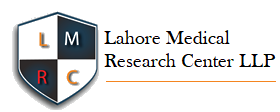Assessment of the Personal Hygiene Practices among Primary School Children in Swat
Personal Hygiene Practices among Children
DOI:
https://doi.org/10.54393/nrs.v5i2.169Keywords:
Personal Hygiene, School Children, Handwashing, Hygiene Practices, Parental EducationAbstract
Personal hygiene plays a pivotal role in maintaining and promoting health, especially among school-going children. Inadequate hygiene practices contribute significantly to the global burden of infectious diseases and school absenteeism. Objective: To assess the personal hygiene practices among Class 3 students of a government primary school in Shakari, Manglawar. Methods: A cross-sectional study was conducted from February to April 2025 among 50 students aged 8–10 years. A structured questionnaire was used to gather data on demoFigureic details and hygiene practices. The responses were analyzed using SPSS version 27.0, with results presented in frequencies and percentages. Results: Findings revealed that 78% of children always brushed their teeth, 44% always cut their nails, 56% wore clean clothes daily, and 44% bathed daily. Handwashing habits were strong, with 88% always washing hands before eating and after using the toilet. Maternal education was low, with 48% illiterate and 40% having only basic education. Household unemployment was 56%, and 46% of families had more than six members. Conclusions: While hand hygiene was well-practiced, other aspects like nail trimming and daily bathing showed room for improvement. Findings highlight the need for reinforced hygiene education and parental involvement to instill lifelong healthy habits in children.
References
Dutta DS. Knowledge & Practice about Personal Hygiene among Primary School Students in Rural Chattogram, Bangladesh. Dinkum Journal of Medical Innovations. 2024 Feb; 3(02): 72-88. doi: 10.71017/djmi.3.2.d-0242. DOI: https://doi.org/10.71017/djmi.3.2.d-0242
Bloomfield S and Ackerley L. Developing better understanding of hygiene is key to developing hygiene behaviour change in home and everyday life settings. Perspectives in Public Health. 2023 Apr: 17579139231163734. doi: 10.1177/17579139231163734. DOI: https://doi.org/10.1177/17579139231163734
Khatoon R, Sachan B, Khan MA, Srivastava JP. Impact of school health education program on personal hygiene among school children of Lucknow district. Journal of Family Medicine and Primary Care. 2017 Jan; 6(1): 97-100. doi: 10.4103/2249-4863.214973. DOI: https://doi.org/10.4103/2249-4863.214973
Sahiledengle B, Alemseged F, Belachew T. Sanitation practice and associated factors among slum dwellers residing in urban slums of Addis Ababa, Ethiopia: a community based cross-sectional study. Journal of Public Health and Epidemiology. 2018 Oct; 10(10): 370-9. doi: 10.5897/JPHE2018.1064. DOI: https://doi.org/10.5897/JPHE2018.1064
Joshi A, Prasad S, Kasav JB, Segan M, Singh AK. Water and sanitation hygiene knowledge attitude practice in urban slum settings. Global Journal of Health Science. 2013 Nov; 6(2): 23. doi: 10.5539/gjhs.v6n2p23. DOI: https://doi.org/10.5539/gjhs.v6n2p23
Delea MG, Snyder JS, Woreta M, Zewudie K, Solomon AW, Freeman MC. Development and reliability of a quantitative personal hygiene assessment tool. International Journal of Hygiene and Environmental Health. 2020 Jun; 227: 113521. doi: 10.1016/j.ijheh.2020.113521. DOI: https://doi.org/10.1016/j.ijheh.2020.113521
Deb S, Dutta S, Dasgupta A, Misra R. Relationship of personal hygiene with nutrition and morbidity profile: A study among primary school children in South Kolkata. Indian Journal of Community Medicine. 2010 Apr; 35(2): 280-4. doi: 10.4103/0970-0218.66894. DOI: https://doi.org/10.4103/0970-0218.66894
Sudjana B, Afriandi I, Djais JT. Correlation of personal hygiene knowledge, attitude and practices among school children in sumedang, Indonesia. Althea Medical Journal. 2016; 3(4): 549-55. doi: 10.15850/amj.v3n4.937. DOI: https://doi.org/10.15850/amj.v3n4.937
Md MH, Arafat Y, Roy S. Nutritional status and hygiene practices of primary school children. Journal of Nutritional Health & Food Engineering. 2014; 1(1): 36-40. doi: 10.15406/jnhfe.2014.01.00007. DOI: https://doi.org/10.15406/jnhfe.2014.01.00007
Ghanim M, Dash N, Abdullah B, Issa H, Albarazi R, Al Saheli Z. Knowledge and practice of personal hygiene among primary school students in Sharjah-UAE. Journal of Health Science. 2016 Oct; 6(5): 67-73. doi: 10.5923/j.health.20160605.01.
Kann RS, Snyder JS, Woreta M, Zewudie K, Freeman MC, Delea MG. Quantifying Factors Associated with Personal Hygiene as Measured by the qPHAT Methodology: Andilaye Trial, Ethiopia. The American Journal of Tropical Medicine and Hygiene. 2023 May; 108(6): 1277. doi: 10.4269/ajtmh.22-0603. DOI: https://doi.org/10.4269/ajtmh.22-0603
Frenkel LD. Infectious diseases as a cause of global childhood mortality and morbidity: Progress in recognition, prevention, and treatment. Advances in Pediatric Research. 2018 Apr; 5(14): 1-1. doi: 10.24105/apr.2018.5.14. DOI: https://doi.org/10.24105/apr.2018.5.14
Afifi HS and Abushelaibi AA. Assessment of personal hygiene knowledge, and practices in Al Ain, United Arab Emirates. Food Control. 2012 May; 25(1): 249-53. doi: 10.1016/j.foodcont.2011.10.040. DOI: https://doi.org/10.1016/j.foodcont.2011.10.040
Gourama H. Foodborne pathogens. InFood Safety Engineering 2020 May: 25-49. doi: 10.1007/978-3-030-42660-6_2. DOI: https://doi.org/10.1007/978-3-030-42660-6_2
Tamomh AG, Elmadani M, Elamin E, Twum P. Assessment of the personal hygiene practices among primary schools children, Sudan: a cross-sectional school-based study. Public Health Open Access. 2021 Jan; 5(1): 1-6. doi: 10.23880/phoa-16000170. DOI: https://doi.org/10.23880/phoa-16000170
Curtis V, Schmidt W, Luby S, Florez R, Toure O, Biran A. Hygiene: new hopes, new horizons. The Lancet Infectious Diseases. 2011 Apr; 11(4): 312-21. doi: 10.1016/S1473-3099(10)70224-3. DOI: https://doi.org/10.1016/S1473-3099(10)70224-3
Aiello AE, Coulborn RM, Perez V, Larson EL. Effect of hand hygiene on infectious disease risk in the community setting: a meta-analysis. American Journal of Public Health. 2008 Aug; 98(8): 1372-81. doi: 10.2105/AJPH.2007.124610. DOI: https://doi.org/10.2105/AJPH.2007.124610
Freeman MC, Stocks ME, Cumming O, Jeandron A, Higgins JP, Wolf J et al. Hygiene and health: systematic review of handwashing practices worldwide and update of health effects. Tropical Medicine & International Health. 2014 Aug; 19(8): 906-16. doi: 10.1111/tmi.12339. DOI: https://doi.org/10.1111/tmi.12339
Rabie T, Curtis V. Handwashing and risk of respiratory infections: a quantitative systematic review. Tropical Medicine & International Health. 2006 Mar; 11(3): 258-67. doi: 10.1111/j.1365-3156.2006.01568.x. DOI: https://doi.org/10.1111/j.1365-3156.2006.01568.x
Scott E, Herbold N. An in-home video study and questionnaire survey of food-handling practices at main meals. International Journal of Environmental Health Research. 2010 Jun; 20(3): 279-85. doi: 10.1080/09603121003729254.
Downloads
Published
How to Cite
Issue
Section
License
Copyright (c) 2025 NURSEARCHER (Journal of Nursing & Midwifery Sciences)

This work is licensed under a Creative Commons Attribution 4.0 International License.
This is an open-access journal and all the published articles / items are distributed under the terms of the Creative Commons Attribution License, which permits unrestricted use, distribution, and reproduction in any medium, provided the original author and source are credited. For comments editor@nursearcher.com












